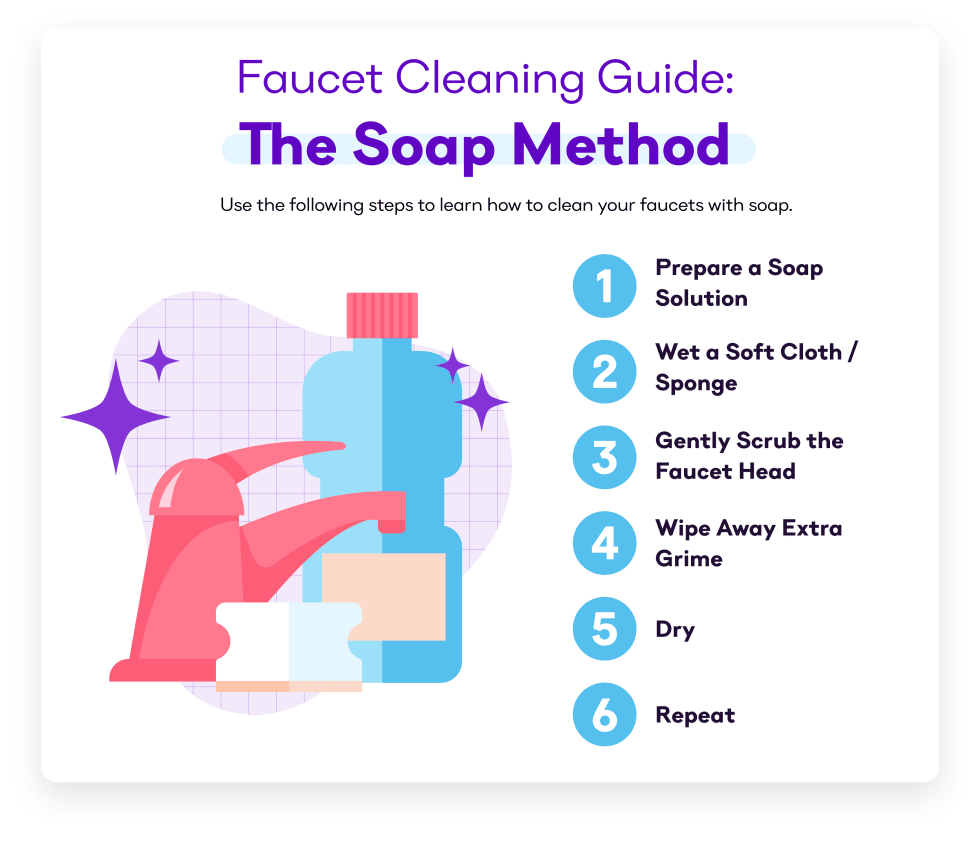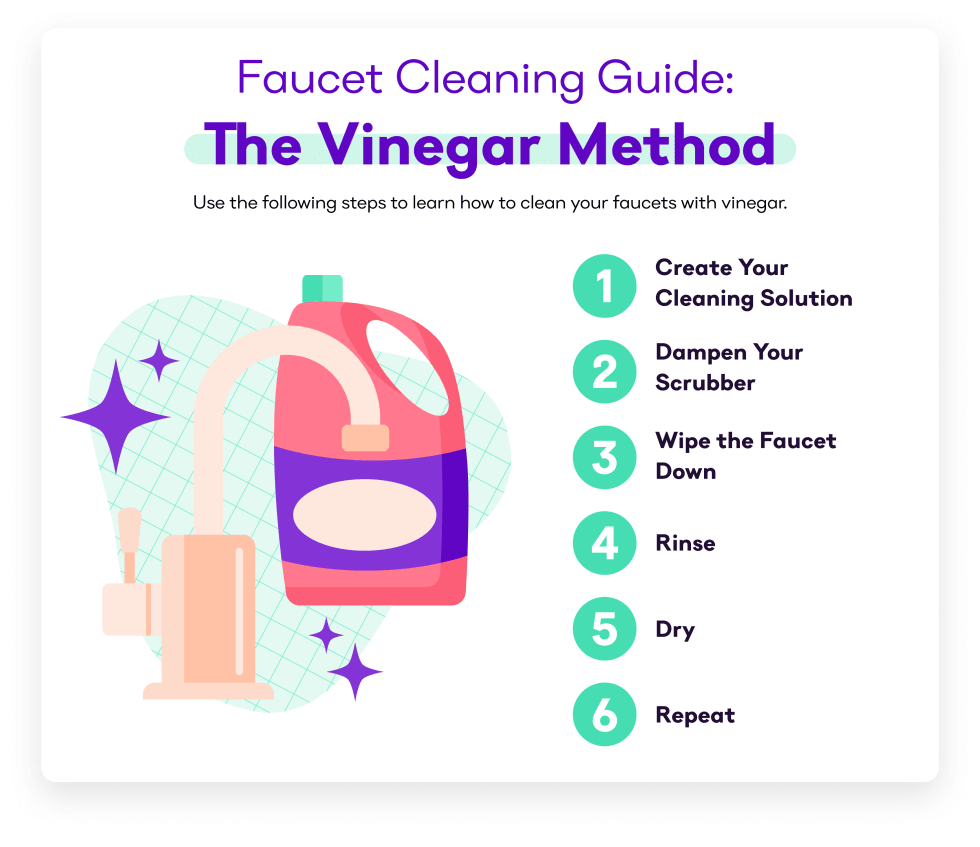The Pembroke
- 112 units available
- 1 bed • 2 bed
- Amenities
In unit laundry, Granite counters, Hardwood floors, Dishwasher, Pet friendly, 24hr maintenance + more

Are your faucet heads looking a little tired and dull? If you're in the market to give them a deep clean and restore your sink's sparkle, then this guide is for you! We'll take you through how to clean a faucet head successfully - from quick, easy hacks to chemical-free solutions. With our these tips and step-by-step guides, it doesn't have to be a challenge to maintain an attractive bathroom or kitchen sink! So, let's dive in and get your faucet looking its best!
To clean a faucet head, you will need a few basic materials. With these in hand, you'll be well-equipped to tackle even the toughest grime and leave your kitchen faucet heads and bathroom sink faucets looking like new.
With these materials, you can do some thorough faucet cleaning. Now, let’s dive into how to use these items to clean your faucets effectively.

Keeping your faucet head clean is essential for maintaining a clean apartment. The soap and water method is simple and effective for cleaning a faucet head. Here are the steps you can use to get the job done:
Following these steps, you can easily clean your faucet head with soap and water, keeping it looking new. If cleaning your faucet head with soap isn’t working effectively, keep reading to learn other tips on how to clean a faucet.

Cleaning a faucet head with steam is an efficient and eco-friendly method for removing tough grime and mineral buildup. By using the power of steam, you can sanitize and descale your faucet head, leaving it looking like new. This method is great for faucets made of materials that are prone to discoloration or damage from chemical cleaners, such as brushed nickel or nickel-plated faucets. Here are the steps on how to clean a faucet head with steam:
With this steaming method, you can avoid using harsh chemicals or excessive water. Keep reading to learn how to clean faucets with vinegar.

Cleaning faucets with vinegar is a natural home remedy. Vinegar’s acidic properties can help to dissolve mineral buildup and grime, leaving your faucet head sparkling clean. Here's a step-by-step guide on cleaning faucets or cleaning shower heads with vinegar:
Cleaning faucets with vinegar is a simple and affordable method that can help keep your faucets looking new and shiny.

Using CLR (Calcium Lime Rust) to clean a faucet head helps rid your sink or bath of limescale and calcium build-up, two of the most common causes of a clogged faucet. CLR is a powerful cleaner that can break up mineral deposits and residue without damaging the metal components of your faucet. Follow these steps to learn how to clean a faucet with CLR:
If you don’t have CLR on hand, another option to clean a faucet head effectively is to use baking soda.
Cleaning a faucet head with baking soda is another way to get rid of dirt and grime. Baking soda can help to dissolve grease and lime deposits, which can make taps look old and discolored.
Sometimes the toughest of stains and clogs will require a more powerful cleaner. Keep reading to learn how to unclog faucets with CLR.
Removing a faucet head may be necessary for a deeper cleaning of your faucet head. The following steps outline the process to remove sink faucets:
Note: The specific steps may vary depending on the type and brand of faucet you have, so it's always a good idea to consult the manufacturer's instructions for your specific sink nozzle.
A clogged faucet aerator can decrease water flow and reduce the overall performance of your faucet. Keep reading to learn the best steps on how to clean a faucet aerator.
Unclogging a faucet aerator is a quick and easy task that can be done with just a few common household items.
Unclogging a faucet aerator is a simple task that can restore the flow of water from your faucet. Follow these instructions to unclog your faucet aerator.
Note: Sometimes an aerator may be so clogged that you may have to end up replacing it, if you are unable to clean in.
Regularly cleaning and maintaining your faucet head and aerator is an essential task that can improve its overall performance. In this guide, we have detailed how to clean a faucet head and provided tips to keep your faucet functioning efficiently and help prevent water waste.
By following these steps and making faucet cleaning a regular part of your cleaning routine, you can ensure that your faucet remains in top condition. So, don't let a dirty faucet be a source of frustration - learn how to clean a faucet and enjoy a sparkling, efficient sink!
It is recommended to clean a faucet head at least once every six months to a year, as regular cleaning can help prevent build-up of mineral deposits.
You need to clean a faucet head regularly to minimize mineral deposits and other debris that accumulate and clog the aerator, reducing water flow and causing leaks.
Generally, you should soak a faucet in vinegar for 30 minutes to an hour to remove most mineral deposits, though the length of time depends on the severity of the mineral buildup and debris.
Yes, you can spray WD-40 up a faucet, but it may not be the best solution for cleaning a clogged faucet aerator, as this petroleum-based product is primarily designed as a lubricant and rust inhibitor.
While it may help to loosen some mineral buildup and debris, it is not specifically designed for cleaning faucets and could potentially harm certain faucet components.


In unit laundry, Granite counters, Hardwood floors, Dishwasher, Pet friendly, 24hr maintenance + more
In unit laundry, Patio / balcony, Granite counters, Pet friendly, Stainless steel, Walk in closets + more